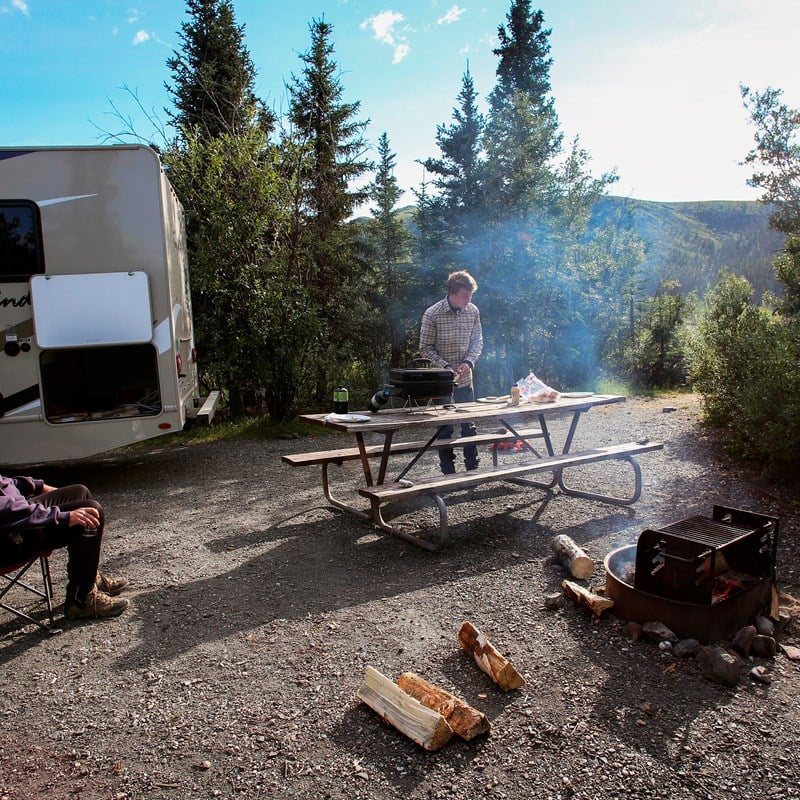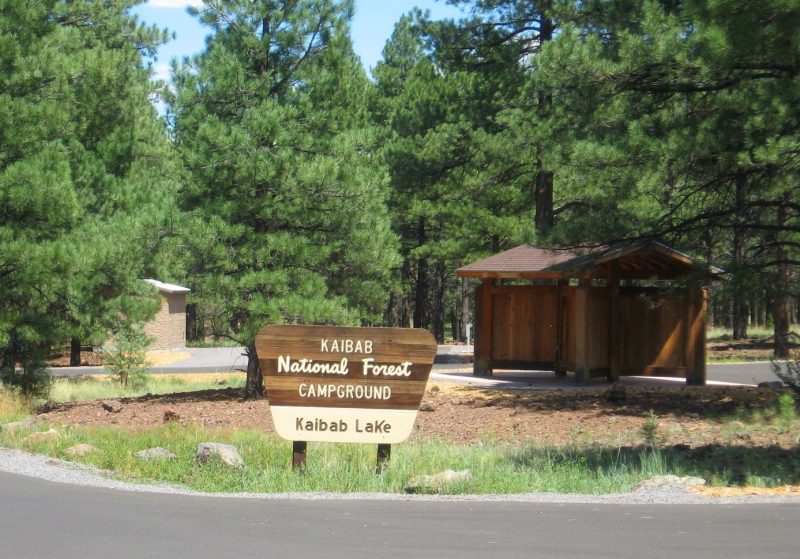If you enjoy free and low cost camping on America’s public lands, it’s a good idea to know the differences between national forests, parks and wilderness areas. Why? Because recreation regulations that apply to one type of public land might be very different on another, and violating them could earn you a hefty fine.

Camping in Denali National Park. Photo via NPS
Remember: always verify camping rules on public lands where you plan to camp by doing your research and contacting the nearest park office, ranger station, etc. In the meantime here’s a general overview to get you started.
Camping in U.S. National Parks
The United States has over 400 national parks and monuments that are managed and strictly protected by the National Park Service. US national parks don’t allow any type of hunting, commercial fishing, or activities like mining and logging.
Camping regulations can vary from park to park but in general:
- Full-hookup RV sites are extremely limited in national parks and usually only available by reserving at Recreation.gov.
- Most campgrounds are dry camping with stringent generator use hours
- Larger RVs over 30′ have fewer campsite choices.
- Free and dispersed camping (camping outside of designated campgrounds) is rare in most national parks.
- Most will only let you stay 7 days in a designated spot.
- Pet rules are extremely stringent: leashed pets only, and rarely on trails.

Kaibab National Forest. Photo via Flickr.
National Forests
The US Forest Service oversees nearly 200 national forests where more relaxed camping rules are in place on 193 million acres in 42 different states. Although the primary mission of the USFS is to protect and care for the land, the government allows commercial activities like logging and mining to take place. In general, camping on national forest land means:
- Your boondocking skills will be tested, most USFS campgrounds are without hookups
- Lower camping fees than national parks
- You have more options for dispersed and free camping
- Accessing camping spots can be challenging for larger RVs
- Longer stays of 14 days or longer are often allowed
- Pets have more freedom to roam off-leash and on-trail
National Wilderness Areas
The National Wilderness Preservation System (NWPS) protects about 9 million acres of designated wilderness lands in the U.S. (almost half is located in Alaska). Although limited hunting and commercial activities are allowed on these lands (typically located within USFS lands), in general you’ll find that you can only visit on foot: most don’t allow motorized anything, including OHVs and RVs.
See also: The 5 Quietest National Parks For RVing

An ok article but it would be much more helpful to include BLM and NWF lands. Very many boondocking opportunities in the West are on BLM or National Wildlife Reserve land. Those being missing from the article suggests that the author is not a Westerner or…does not do a lot of boondocking.
I’m amazed at the number of times we go camping in federal facilities and see people flagrantly violating almost every rule they have. The really sad part is they usually aren’t held accountable.
Many hosts seem to turn the other way, and who can blame them with the way so many people nowadays will violently go off on them.
Chet,
Can you contribute additional information? We would like to know how to differentiate BLM land from other types. Is a BLM permit valid in a specific or broad area/state?
I think there should be more restrictions on ohvs Getting to where you can’t go anywhere with out them disrupting every thing. Find tracks everywhere .
The Corps of Engineers also has developed and maintains a good number of campgrounds. Many of them offer water, electricity and dump stations.